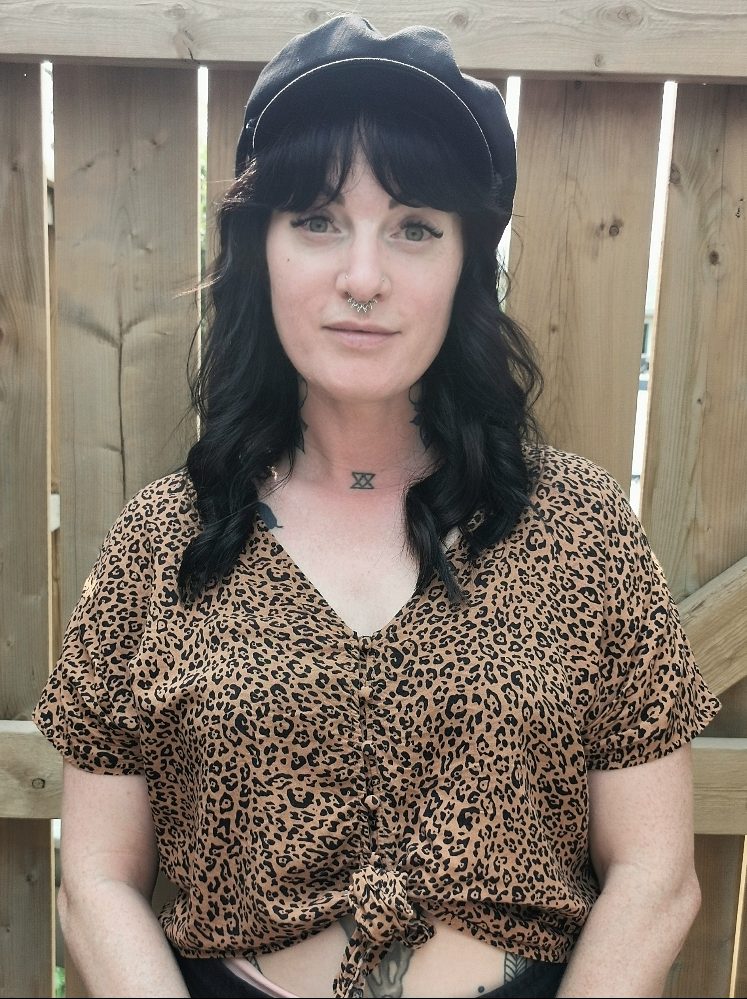By Agatha Grochowski
Working out of the Calgary chapter, Marie Ferraro (she/her) is the Provincial Communications Manager for Alberta Alliance Who Educate and Advocate Responsibly (AAWEAR). Marie describes herself as a sober human who struggled with substances for two decades. “Members of the active drug using community are really important members of our community who deserve our respect and advocacy.” Marie says, “So that’s why I do the work that I do because I love the drug-using community. They are my people.”
What is AAWEAR?
With a mission to improve lives through support, education, and action, AAWEAR works tirelessly for Alberta’s drug-using community. This peer-led organization establishes a feeling of connectedness and provides services with compassion, respect, and zero-stigma as their team members have lived experience with drug use, houselessness, sex work, domestic abuse survival, and more.
Medical Education: Changing Lives and Shaping the Future
Earlier this year, AAWEAR piloted an immersive harm reduction educational program for third year medical students from the University of Calgary, Cummings School of Medicine. For eight weeks, these students underwent in-depth training and made ties to Calgary’s drug-using community. They saw harm reduction practices first-hand, received training on supply distribution, and learned the logistics behind operations. In addition to outreach activities, students heard from Safeworks and Skipping Stone Foundation.
Students put this training into practice when shadowing AAWEAR outreach workers. “I get teary when I think of it, it was so moving!” Marie recalls an instance when a community member fell down some steps and a student leapt forward immediately to provide care. “Some of these students would have never connected with this community otherwise.”
Not only did this program offer medical students more compassion and understanding for their future patients who use drugs, but it also works towards improving the relationship between the drug-using community and medical providers.
“We’re trying to build this radically empathetic harm reduction world. That’s my hope.” Marie says, “For us it feels like such a big win to be able to connect with the future doctors that might be working in our province and get them to connect with the community outside of medical spaces and really humanize and show that they are of value.”
Although this program had to pivot many times due to the COVID-19 pandemic, it was a massive success. It received nothing but positive reviews, with some participants committing to write blog posts and volunteer with AAWEAR. Marie hopes that over the course of their future careers, students will be inspired by their experience and continue to connect with other like-minded organizations.
Harm Reduction Help for Health Care Professionals
In order to better serve the drug using community, Marie identifies two impactful changes that health care providers can make to build, repair, and maintain healthy patient relationships.
Language
Marie asserts that trauma-informed care is a necessity. “Trauma-informed care is the start. It is the understanding that our community is traumatized. And the biggest barrier in healthcare is stigma.” She says, “I always talk about language being such an important way to start de-stigmatizing things.” Marie prefers using inclusive terms such as person who uses drugs and member of the drug using community. She emphasizes that we need to move away from words like overdose as it puts the blame on the person instead of the substance. Drug poisoning is a more accurate, less harmful term to use instead.
Equity, Diversity, and Inclusion
There is harmful structural stigma present within our health care system that has led to a lower standard of care for gender-diverse and/or people of colour who use drugs. A single physician may not be able to change the entire health care system, but they can change what happens in their clinic. Using a patient’s correct name and gender at a medical appointment creates an atmosphere of openness, acceptance, and respect that will likely motivate them to access care in the future.
Final Thoughts
Although abstinence works for Marie, she firmly believes in the importance of harm reduction principles and practices.
“Each practitioner can make changes to destigmatize [drug use] by using appropriate language, getting educated on trauma-informed care and harm reduction practices, and letting go of the abstinence-based model.” Marie says, “It isn’t working and our people are dying.”
Medical professionals must meet patients where they are at in the moment. It is important to remember that not all people that use drugs consider their drug use problematic. In the end, it’s up to them to make that determination.
In addition to outreach and advocacy for people who use substances, AAWEAR strives to educate professionals and the public to end drug use stigma. They have two courses open to the public:
- Harm Reduction Hearts – an introductory course created to cultivate empathy through stigma debunking and discussion
- Harm Reduction 101 – a comprehensive course on Naloxone training, in-depth harm reduction practices, and education on using safely.
Get Connected
Expand your knowledge, find resources for patients, and attend events by visiting www.aawear.org for more information. Stay up-to-date by following AAWEAR’s social media channels on Twitter, Facebook, and Instagram.
Interested in learning more? Reach out to info@AAWEAR.org.


